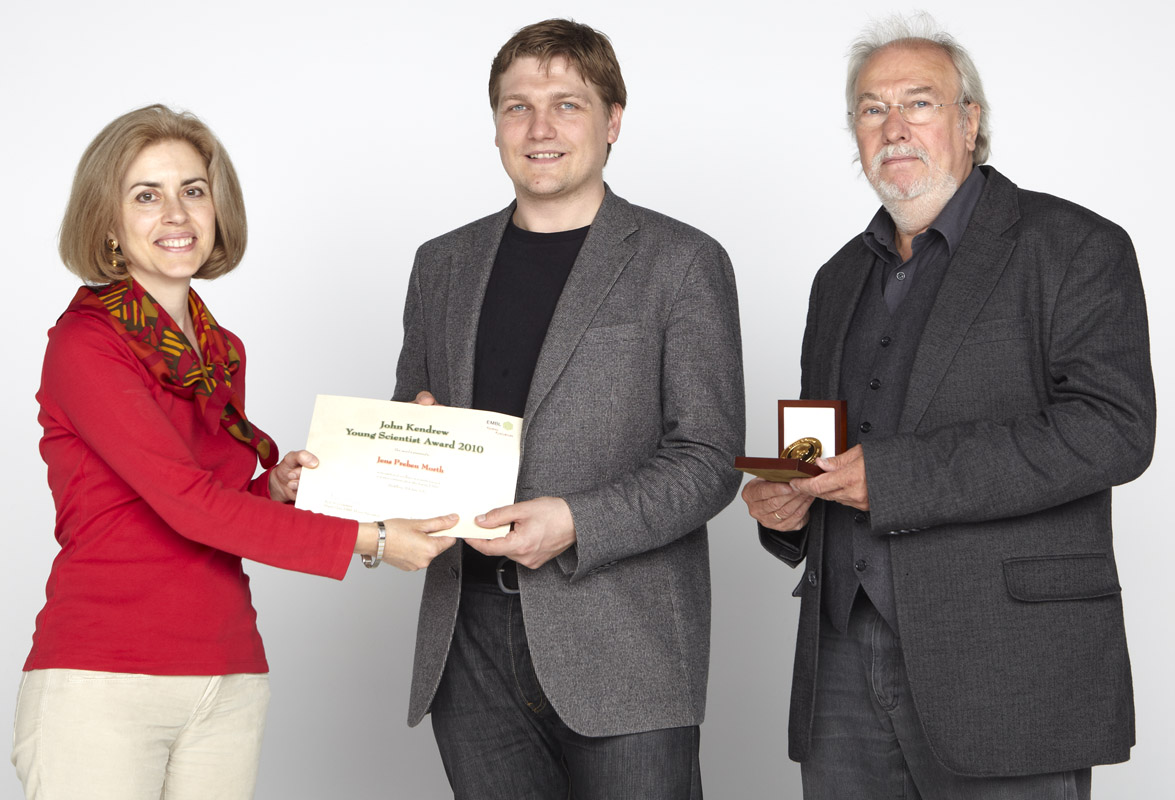Preben Morth: 2010 John Kendrew Award recipient

In the world of science, recognition often comes quietly but leaves a lasting impact. Such is the case of Preben Morth, who was honored with the 2010 John Kendrew award on 11 June 2010. The award, presented by his former group leader, Paul Tucker, and orchestrated by Niovi Santama, Deputy Vice Chair of the EMBL Alumni Association, is a testament to Preben’s contributions to structural biology.
Titled “There and Back Again” in a nod to his favorite book, Lord of the Rings, Preben’s presentation took the audience on a journey through Aarhus University, the realm of structural biology, and his team’s significant project, “A Pumps Tail.” This project revealed the structure of the sodium pump, providing insights into its inner workings and regulatory mechanisms. Their groundbreaking research, published in Nature in 2007, formed the foundation for their subsequent work.
The ceremony took place in the impressive new Advanced Training Centre (ATC) building at EMBL. Preben, along with his student Kaare Andersen, found the facility noteworthy. Beyond its physical attributes, what truly struck them was the palpable “excitement for science buzzing in the air” that filled the atmosphere.
Preben’s selection as the John Kendrew award recipient followed a rigorous process. The selection committee faced a challenging decision due to the exceptional quality of applicants. After careful deliberation in December, Preben Morth, a former EMBL Hamburg researcher from 2001 to 2005, emerged as the winner. Giulio Superti-Furga, Chair of the EMBL Alumni Association, explained their choice: “Our decision was based on his outstanding contribution, especially since leaving EMBL, to the structural biology of membrane proteins. He has also been a real inspiration to school students with his enthusiastic involvement in science education.”
Preben’s journey from an EMBL Hamburg PhD student to an Associate Professor at Aarhus University was marked by dedication and pioneering research. His work on the sodium pump, an enzyme discovered over 50 years ago by Nobel laureate Jens Christian Skou, demonstrated his perseverance and determination. Preben’s interest in structural biology was nurtured during his time at EMBL Hamburg, where he studied bacterial two-component systems.
Preben is the first outstation scientist to receive the John Kendrew award, a distinction he regards with great pride. He stated, “I am incredibly proud to have received it. John Kendrew was one of the founding fathers of protein crystallography, and to have received an award that carries his name will always stand out as an absolute highlight of my career.”
In Oslo, Preben has embarked on a new phase of his scientific journey, conducting research at the Centre for Molecular Medicine Norway. His team has made significant contributions, including a recent publication in Nature that offers a novel model for ion translocation by the Na,K ATPase. Their work continues to explore anion transporters, bicarbonate transport, calcium and magnesium transporters, and pH regulation.